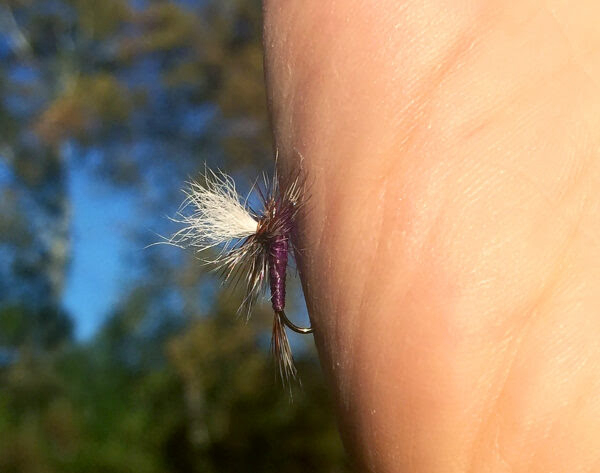| What to do if you hook yourself |
| By Alex McCrickard, Virginia DWR from The Fishing Wire Have you ever had to end a great fishing trip early due to accidentally hooking yourself? Safety should never be overlooked when spending time on the water fishing. Without a doubt, it’s essential to make sure you are dressing for the weather, checking river flows or lake conditions, keeping an eye on the radar and forecast, wearing a life jacket if you are on a boat, and staying hydrated. However, one of the more common accidental injuries that an angler can encounter is being hooked with a fly, lure, or hook. It’s essential to know when the injury can be handled on the water and when it’s time to go to the emergency room. I have spent a considerable amount of time teaching novice fly anglers in my years as a fly fishing guide on Wyoming’s Upper North Platte River. From experience, I will say that one of the less enjoyable aspects of being a guide is getting impaled with your client’s fly as they are learning how to cast for the first time. I have been accidentally hooked many times, including having flies embedded in my leg, arm, back, and even nose. I am lucky and have never had to take a trip to the emergency room with any of these injuries. The technique outlined below can help you remove an impaled hook while on the water.  Photo by Lynda Richardson/DWR Photo by Lynda Richardson/DWRThe technique for removing an impaled hook is actually quite simple. Start by cutting off a two- to three-foot long section of heavy monofilament, 15 or 20 lb. test line. If you’re fly fishing, 0x tippet will work fine. Next, thread the monofilament between the shank of the hook and your skin, situating the loop of monofilament at the bend of the hook. Make sure you have at least 12” of monofilament on either side of the hook. With your thumb, press down on the shank of the hook until the shank is parallel to your skin. Once you have pushed down, quickly jerk the monofilament with your other hand in a motion parallel to the shank to remove the embedded hook. It’s a simple push-and-pull technique that is highly effective. I have performed this on myself many times, but it can certainly be beneficial to have a family member or friend assist you in the process, especially if you hooked yourself in the back or arm.  The tips below can help you in the process as well as decipher when it’s essential to seek medical attention: The tips below can help you in the process as well as decipher when it’s essential to seek medical attention:This technique is not recommended with treble hooks. Treble hooks on lures pose an entirely different situation and it’s best to seek medical attention if deeply impaled by two out of three treble hooks. Consider pinching the barbs on your hooks before fishing, especially for beginners. A barbless hook is a lot easier to remove than a barbed hook. Trust your gut—if you think you need medical attention, then it’s best to go to the emergency room. If you are hooked deeply in the neck or face, it is best to seek medical attention. Larger and heavier hooks, especially saltwater hooks that are deeply impaled, might also require a trip to the emergency room. Always wear a hat and polarized sunglasses when fishing on the water. Not only will sunglasses protect your eyes, but they also cut down against the glare and help you spot fish in the water. Spread out and give yourself ample casting space when fishing together with friends and family. Carry a first aid kit in your car when wade fishing or in your boat so you are ready when a situation arises. See more strategies for removing embedded hooks, complete with diagrams. |